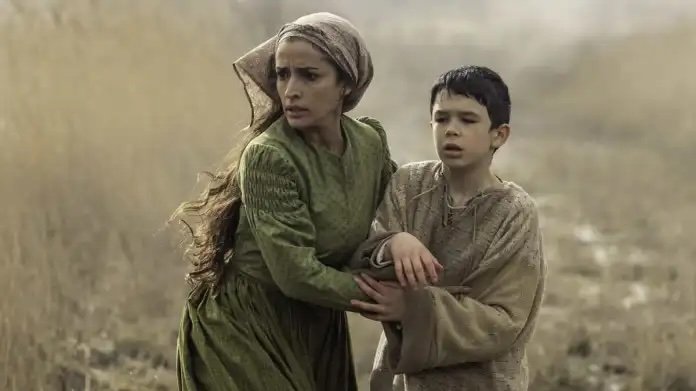
Spanish horror film is a raw exploration of fear and mental illness
By Tom Soares
An unduly and overbearing young mother. A middle-aged father emotionally detached from his family, and haunted by a tragic childhood. A curious but scared little boy doing his best to understand the harsh reality in which he lives. And a vicious and sinister creature lurking outside their home, preying on those “who are the most vulnerable.”
These are the characters of The Wasteland, originally titled El Páramo in Spanish, an intense and heart-stopping horror movie just released on Netflix.
Directed by Barcelona native David Casademunt, The Wasteland is the grim tale of a nineteenth century family forced to live in deep isolation in the Spanish wilderness, in a country ravaged by continuous war.
Lucia (Inma Cuesta), a beautiful and vibrant woman with a mind of her own, works double duty to help her husband, Salvador (Roberto Álamo), care for their farm, and raise their young son, Diego (Asier Flores).
Nonetheless, Lucia’s rigid determination to overprotect the boy from becoming poisoned by growing up in such a treacherous world and the precariousness of their lives is a constant point of friction with Salvador, who often remains quiet and withdrawn from his loved ones.
One day, when nothing seems out of the ordinary, a surprising and unwanted visitor unchains a series of tragic events that uproots Lucia, Salvador and Diego from their mundane existence, and throws them into the grasp of the terrible beast.
The Wasteland is a superlative psychological horror, and wastes no time in seizing viewers attention with a blood-chilling opening scene that flawlessly sets up the tone of the movie and the relationship between the characters.
Casademunt and his team of writers, Martí Luca and Fran Menchón are also quick to assert Lucia’s unquestionable dominance over her husband and son, while the beautiful cinematography by Isaac Vila, music by Diego Navarro and production design by Balter Gallart enhances the storytelling, creating a continuous sense of urgency, desperation, and fear of the unknown.
In one scene, when Diego reluctantly tries to slaughter a rabbit but accidentally lets the poor animal escape, he asks “mama, what will happen to the little rabbit that ran away beyond the limits?”
“The posts your father put up, what are they for?” Lucia replies, helping the boy find the answer for his question.
“To remind us that beyond them there is only war,” he acknowledges. “That’s right, so nothing good can happen to him,” she says, stressing out the importance of remaining within boundaries.
Indeed, Inma Cuesta gives a masterful and multi-layered performance as Lucia, most remarkably in the third act, when her character undergoes a dark and violent transformation. She also has an undeniable chemistry with Asier Flores, who comes out as a very strong actor, stealing every scene he’s in.
As for Roberto Álamo, the veteran actor gives a very resolute yet quiet performance, allowing Salvador remain in the shadows as a man of few words, someone who carries a crushing childhood trauma but who’d rather teach Diego about the hardships of life than shield him from it.
Additionally, The Wasteland is very consistent with its themes, choosing to be extravagant in its depictions of mental illness, abandonment and fear, with the creature that surrounds the land serving both as an allegory for and a reminder that our own emotions may be just as dangerous as the unknown.
The Wasteland is an exceptional psychological horror film, a prime example of the importance of making foreign cinema even more accessible to viewers everywhere. Under the direction of David Casademunt and with a phenomenal cast, The Wasteland is the kind of movie that lingers with you for days after watching it.
The Wasteland is currently available on Netflix.

